The Jewish Traveler
Feature
The New Jerusalem
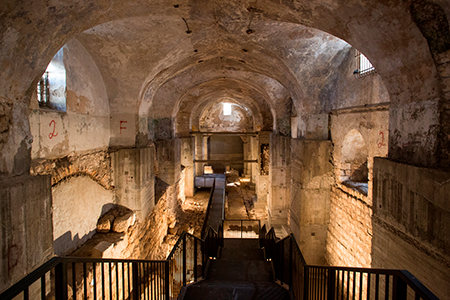
Jerusalem the Eternal, as Israel’s capital is often called, is enduringly attractive, constantly changing and regularly disputed. Built and destroyed repeatedly for thousands of years, it is now growing rapidly, largely across the pre-1967 Green Line, but also skyward in high rises, especially along the car-free, pedestrian-only Jaffa Road.
Some of Jerusalem’s sights today seem immutable: the Western Wall, the Dome of the Rock, the Church of the Holy Sepulchre. But archaeological discoveries periodically alter our view of the past. And new sights—from museums to restaurants—add experiences to the city’s already crowded palette.
The relatively new and still expanding light rail enables visitors to go beyond the usual tourist sights in the Old City and other central neighborhoods to get a taste of how the city has grown since 1967. Riders can travel to its northeastern terminus in Pisgat Ze’ev and eventually, riding in the opposite direction, after passing the Chords Bridge and the current western terminus at Mount Herzl, will be able to go as far as Hadassah-Hebrew University Medical Center at Ein Kerem. Here is just a sample of some of the newer, updated and less-traveled sights in the city.
THE KISHLE AND TOWER OF DAVID
The kishle, just inside the Old City’s Jaffa Gate and now part of the Tower of David Museum complex, is notorious in Jerusalem lore. It was built in 1834 by the Egyptian ruler Ibrahim Pasha as a horseshoe-shaped barrack. Later, under British rule, part of it became a police station and part became a jail where members of the Irgun, the anti-British Jewish underground, were held in the 1940s.
In the 1980s, Eilat Lieber, now the director of the Tower of David Museum, discovered that the former jail was on the museum’s property and proposed clearing it for use. When architect Amit Re’em started excavating the site, layer after layer revealed exciting finds going back 2,800 years.
Visitors enter at the level of the jail, where they can see inscriptions by Irgun inmates. Among the older finds are fabric-dyeing basins from the Crusader period, the foundations of Herod’s palace (where some believe the trial of Jesus took place) and a wall that may be part of the defenses erected by the biblical King Hezekiah.
The entire Tower of David Museum is worth a visit, both because of its well-designed exhibitions and because its courtyard shows clearly the many periods of the structure’s use as a citadel.
The Kishle itself is open only to guided groups; book in advance for English tours, on Fridays, and prepare to go up and down steps.
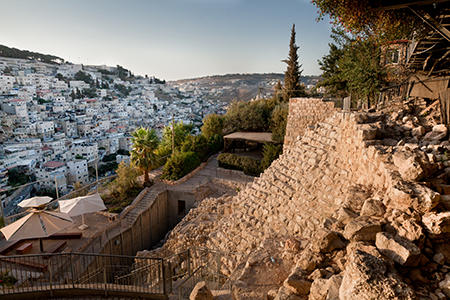
CITY OF DAVID
Both the Gihon Spring, a source of water, and Jerusalem’s ancient sanctity were among the reasons that King David made the city his royal abode. Since the 19th century, archaeologists have sought support for the biblical accounts of the king’s residence in Jerusalem, most recently at the City of David, just south of the Old City walls, in the Palestinian village of Silwan.
The official tour of the City of David, a national park, includes a 3D presentation of the site’s history; walks through tunnels that once enabled the ancient inhabitants to safely reach the spring, which was outside the city walls; and a wall that may have been part of King David’s palace.
Most recently, a Roman-era stepped road ascribed to Herod is being excavated. The road leads from King Hezekiah’s pool up to the Temple Mount and is being touted as a “pilgrimage road.” Part of it is already open to the public.
The City of David digs have aroused criticism by leading Israeli archaeologists, who argue that the work is being conducted under the homes of Silwan residents without their permission; that a new visitors’ center larger than the current one is to be built above finds that will then be relegated to a basement; and that the strictly Jewish-Zionist narrative ignores the finds of other cultures.
For an alternative tour that explores the area’s history in the context of the Israeli-Palestinian conflict, check out the offerings from NGO Emek Shaveh.
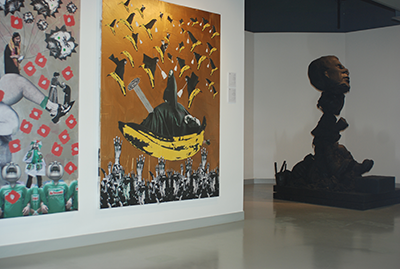
MUSEUM ON THE SEAM
Art and faith do not diminish each other; they are complements, says Raphie Etgar, the director and curator of the Museum on the Seam, a contemporary art museum with a sociopolitical focus. “What is verbally indescribable” can often “take shape and form through artistic means,” Etgar says. And yet, he notes, art provokes anxiety in the ultra-Orthodox world and is nearly absent from it. “Thou Shalt Not,” a groundbreaking exhibition on view through December, explores the values and beliefs of this society, revealing the male-dominated world in which religious feminist artists work and seek their identity.
The museum has exhibited the works of artists from Israel and abroad, exploring ideologies, human rights and the relationship between the individual and the state. Situated on the edge of the ultra-Orthodox Meah She’arim neighborhood, it is on a main street—Kheyl Hahandassa—that was once the border between Israel and Jordan, the “seam” from which the museum derives its name.
The building, designed in the 1930s by the Palestinian architect Andoni Baramki as his family home, was appropriated by Israel in 1948. Between 1948 and 1967, it served as an Israel Defense Forces outpost next to the famous Mandelbaum Gate, the only link between the halves of the divided city. Starting in 1970, the building housed various exhibitions before becoming home to the Museum on the Seam in 2005. The accessible museum is near a light rail stop, and its rooftop offers an excellent view and a dairy café.
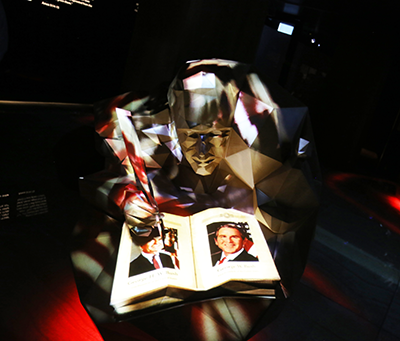
FRIENDS OF ZION MUSEUM
Jean henri dunant was a 19th-century Swiss Protestant businessman and philanthropist who helped establish the Red Cross and the first Geneva Convention, winning the Nobel Peace Prize in 1901. His friend Theodor Herzl dubbed him a “Christian Zionist” for promoting Jewish settlement in the Land of Israel, an idea other devout Christians supported in his time.
Dunant’s is one of the 33 stories highlighted in the Friends of Zion Museum, which recently opened in the downtown Nahalat Shiva quarter. Conceived by Mike Evans, a Jewish-born American Evangelical author and commentator on the Middle East, the museum uses Israeli technology to proclaim its message, which couples the biblical land with the modern state: Because God promised the Land of Israel to the Jews, non-Jews must support them and the State of Israel.
In its first five months, the museum welcomed 100,000 visitors, half of them Israelis, including police and IDF groups. The museum is planning to work with newly appointed Israeli diplomats, helping them learn about pro-Israel communities in the lands to which they have been assigned.
Tours of the fully accessible museum are offered in 16 languages and must be booked in advance. A kosher cafeteria and gift shop are open to the public.
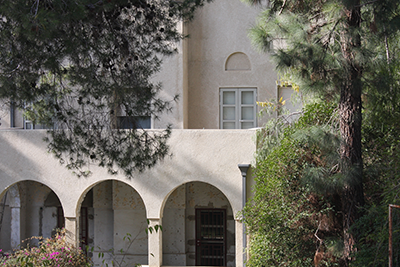
LEVI ESHKOL MUSEUM
A two-story family home with an arched portico in the Rehavia quarter of the city served as the official residence of three Israeli prime ministers: David Ben-Gurion, Levi Eshkol and Golda Meir. It was here that Meir convened her famous “kitchen cabinet,” to whom she served cake she had baked herself. Now the restored building houses a small interactive museum devoted to the life and achievements of Levi Eshkol.
Like every Israeli prime minister, Eshkol dealt with defense—he was in office during the Six-Day War—and diplomacy during his term, from 1963 until his death in 1969. But his decades of involvement in the civilian sector also led him to focus on settlement and infrastructure, including supplying water for agricultural development. These are the aspects emphasized in the new museum, which takes up the first floor of the house.
The plastered concrete house was designed by Benjamin Chaikin in 1933 for Julius Jacobs, the British Mandatory vice governor of Jerusalem. Jacobs was killed in the Irgun attack on the King David Hotel in 1946, and his family eventually sold the house.
The restoration and museum are a joint venture of Yad Levi Eshkol and the Society for the Protection of Nature in Israel, whose Jerusalem offices are now on the second floor.
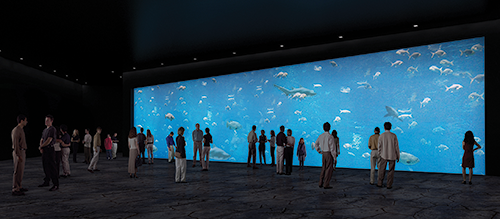
GOTTESMAN FAMILY ISRAEL AQUARIUM
Jellyfish, clownfish, sharks, Galilee blind fish and Dead Sea tooth carp—all can now be seen live in Jerusalem. They are the inhabitants of the new Gottesman Family Israel Aquarium, Jerusalem, at the Tisch Family Zoological Gardens. Israel’s first aquarium is part of a major expansion of the zoo, but can be visited separately.
Visitors first encounter a dry section representing the Dead Sea, then move on to three large tanks representing the three main bodies of water in and around Israel. The first is for the Kinneret, or Sea of Galilee, with St. Peter’s fish in a simulated lake setting. Aquarium-goers then continue through an acrylic tunnel to one of the main attractions: a tank with sharks, rays, sea turtles and other denizens of the Mediterranean Sea. The Red Sea tank holds blue-spotted stingrays, surgeonfish and reef sharks, among others.
Behind the scenes, the aquarium is busy with conservation through research and breeding of species endangered by pollution and the disappearance of their natural habitats. The design of the aquarium itself, by Raviv Tal Architects, is a study in environmental awareness. Built into a south-facing mountainside to save energy, the aquarium has advanced filtration systems to conserve water.

FUTURE SIGHTS
Construction is underway on the Schottenstein National Campus for the Archaeology of Israel, designed by celebrated architect Moshe Safdie. Located between the Israel Museum and the Bible Lands Museum, the sprawling facility will serve as an introduction to both. The campus will house two million archaeological finds, among them 15,000 items relating to the Dead Sea Scrolls. Partial occupancy is set for mid-2018.
A new home for the National Library of Israel, designed by Swiss architectural firm Herzog & de Meuron and situated opposite the Israel Museum, is scheduled to open in 2020.
Esther Hecht is a journalist and travel writer based in Jerusalem.










 Facebook
Facebook Instagram
Instagram Twitter
Twitter
Leave a Reply